Some Windows PC users may keep seeing the An app default was reset notification popping up in the Action Center. You’ll notice the random popups for various apps repeat one after another often with the icons on the desktop flickering and PC running slowly, which prevents you from working with the computer normally. In today’s post, we will present the cause and then provide the possible solutions that you can try to help remediate this issue.
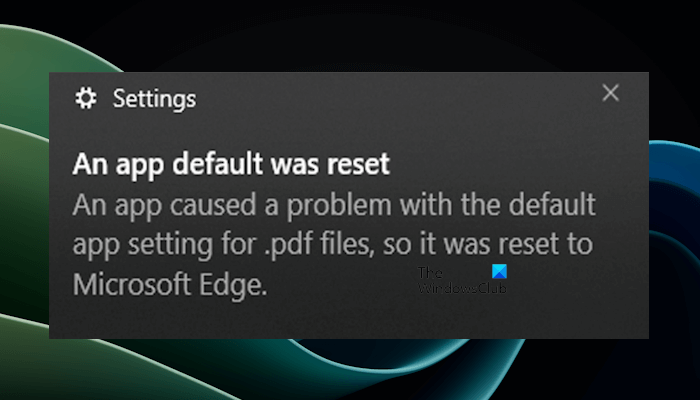
This issue is caused by a bug in the Windows Update that either resets or tries to reset the default app back to what it originally was (usually to the UWP apps). The reason why Windows does this is because it thinks that the third-party application changed the file associations by incorrect methods. So, Windows resets the file associations/default apps.
The complete error message is:
An app default was reset. An app caused a problem with the default app setting, so it was reset.
In the above message, the name of the app is different for different users, depending on the file association.
An app default was reset on Windows 11/10
If the “An app default was reset” notification keeps popping on your Windows 11/10 computer, the following suggestions will help you fix this issue. Before proceeding, we suggest you check for Windows Update. If an update is available, download and install it. After installing the latest Windows Update, check if the problem persists. However, if the issue started after installing the latest Windows Update, you can uninstall that particular update.
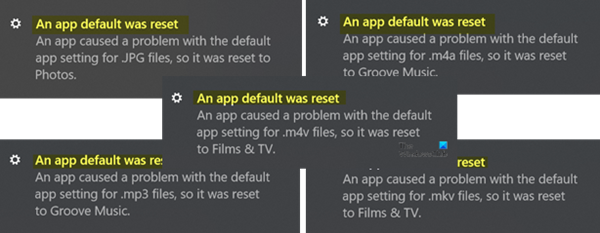
- Set your Default program back to what you want it to be
- Use freeware Stop Resetting My Apps
- Uninstall and Hide recently installed Windows Update
- Remove the Windows 11/10 native app
- Sign in with a Microsoft Account
- Turn on Focus Assist
- Troubleshoot in a Clean Boot state
- Enable the Automatically save my restartable apps setting
Before you begin, update your Microsoft Store apps.
1] Set your Default program back to what you want it to be
In Windows 11/10, to set default apps you will have to go to Settings > Apps > Default apps. You can even choose default apps by file type or protocol and set defaults by app.
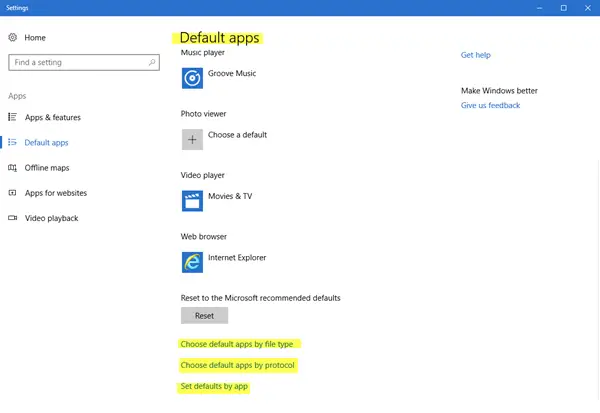
To select default apps by file type or link type, scroll down the Default apps page and select the required option under the Related Settings section.
This post will show you how to change Default Program settings.
2] Use freeware Stop Resetting My Apps
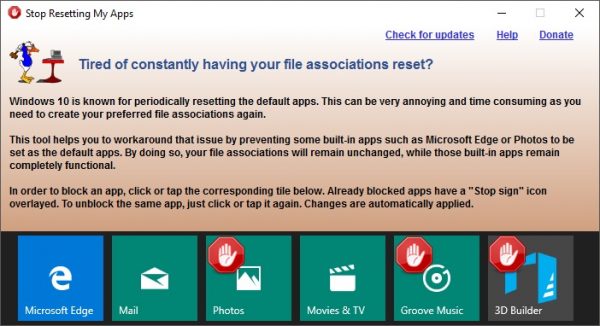
You can use this freeware called Stop Resetting My Apps. It is a free tool that prevents the automatic resetting of default apps, programs, and file associations by Windows 11/10.
3] Uninstall and Hide recently installed Windows Update
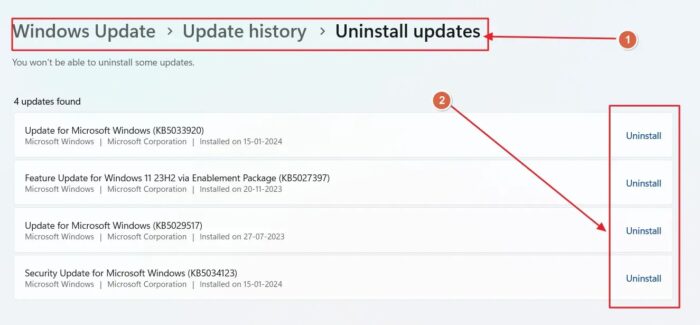
If you started experiencing the “An app default was reset” popup notification loop after you installed some new programs, software, applications, or Windows Updates, you could consider uninstalling the program(s) and/or uninstalling the Windows Update to fix the problem. You may then need to Hide the Update.
4] Remove the Windows 11/10 native app
Windows 11/10 often resets the default app to its built-in applications automatically, like video, audio, and image apps. However, you can remove the built-in apps from Windows 11/10 to avoid the repeated popups of “An app default was reset” on condition that you’ve third-party programs or software with similar features in place. You can set such third-party applications as your default apps.
To remove the native UWP apps using PowerShell, do the following:
Press Windows key + X, when the jump list appears, press A to launch PowerShell in admin/elevated mode.
Copy and paste the command below into the window and hit the Enter. (Note: The two asterisks stand for any sequence of any length so that you don’t need to type the full name of the app.)
get-appxpackage *photos* | remove-appxpackage
This example is for the Photos app if you’re having the issue with another in-built app, substitute the name of the app instead.
When you want to restore the apps, just copy and paste the command line below into the Windows PowerShell (Admin) environment and hit Enter.
Get-AppxPackage -AllUsers| Foreach {Add-AppxPackage -DisableDevelopmentMode -Register "$($_.InstallLocation)\AppXManifest.xml"}
5] Use a Microsoft Account
If you are signed in with a local account then try to switch to the Microsoft account first. Some users reported changing to a Microsoft account resolved the “An app default was reset” notification error for them.
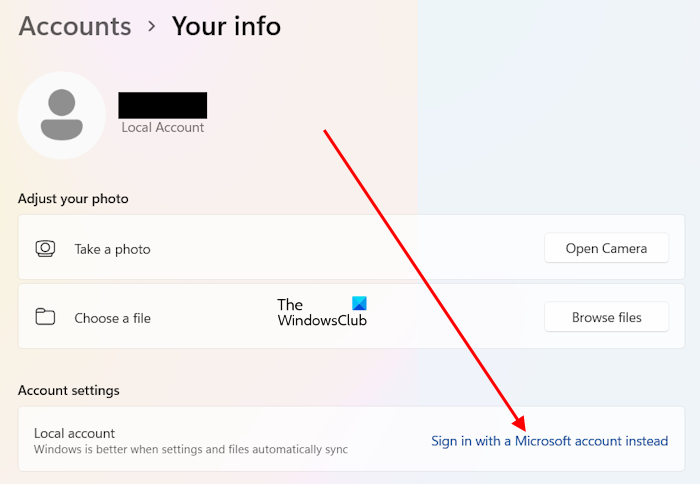
To switch to a Microsoft Account from a local account, do the following:
- Press the Windows key + I to launch the Settings app.
- Select Accounts.
- Click Your Info from the left pane.
- Select Sign in with a Microsoft Account option and follow any additional on-screen instructions.
6] Turn on Focus Assist
If the “An app default was reset” popup notification doesn’t have an effect on your software usage on Windows 11/10, then you can disable the popups to stop the distraction.
Here’s how:
- Right-click the notification icon on the bottom right.
- Select Focus Assist. and use it.
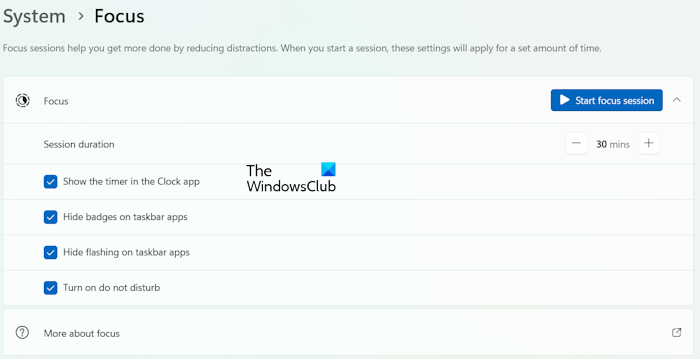
In Windows 11, this setting is named Focus. Open Windows 11 Settings and go to System > Focus.

Instead of turning on the Focus on Windows 11/10, you can also turn on Do not disturb mode. Open Windows 11 Settings and go to System > Notifications. Now, turn on Do not disturb.
It will not stop the popup, but it will not disturb you.
7] Troubleshoot in a Clean Boot state
The notification says that an app has caused a problem due to which the default app was reset. However, the notification does not show the name of that problematic app. To identify that problematic app, you can troubleshoot in a Clean Boot state.
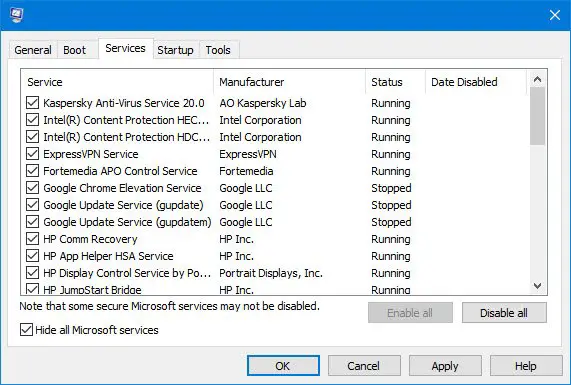
To start your system in a Clean Boot state, you have to use the MSConfig application. When you are in the Clean Boot state, monitor your system and see if the error message pops up. If not, start enabling the disabled applications one by one and restart your system every time you enable an application. When the notification starts popping up, the application you have just enabled is the culprit.
Now, you can uninstall that problematic application or check if an update for that application is available.
8] Enable the Automatically save my restartable apps setting
If the problem still persists, you can try enabling the Automatically save my restartable apps setting. The following instructions will guide you on this:
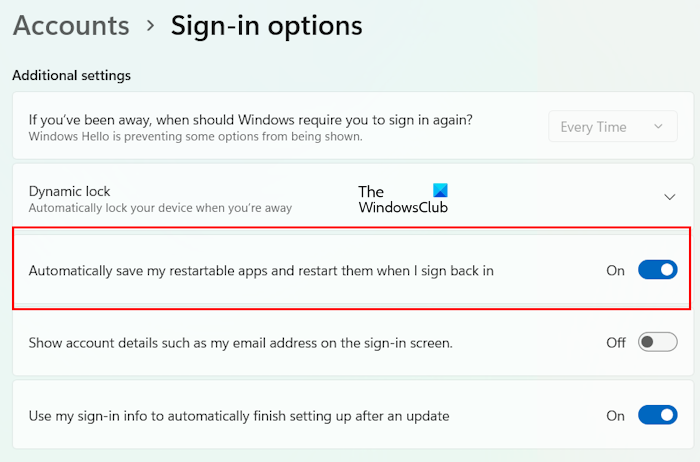
- Open Windows 11 Settings.
- Go to Accounts > Sign-in Options.
- Under the Additional settings section, turn on the switch next to the “Automatically save my restartable apps…” setting.
I hope this works for you.
Can default apps be deleted?
If the default app is not a bloatware, you can delete it. To delete a default app that is not bloatware, open your WIndows 11/10 Settings and go to Apps > Installed apps. Now, locate the app that you want to delete. Click on the three dots next to the app and select Uninstall. Follow the instructions to uninstall the app. After uninstalling the app, the file associations associated with that app will also reset automatically.
What happens when you clear defaults on an app?
In Windows 11/10, you can set different apps as default apps for different files. If you clear defaults on an app, all the file associations associated with that app will also be deleted. Now, when you open the file associated with that app the next time, Windows will ask you to select an app to open that file.
Read next: Cannot change default app by File Type in Windows.
Leave a Reply